Almost every high-volume recruiting cycle seems like an uphill battle as many candidates flood the application pipeline.
The task of sorting through countless resumes and conducting back-to-back interviews seems never-ending.
But the challenge doesn’t end there!
With the tight hiring deadlines, the pressure to find the right candidates mounts by the day.
And halting the recruitment process is not an option (You can’t even think about it!), as the need for skilled talent persists.
So, what’s the solution? Maybe gamification.
Why? That’s what this article is all about – How adopting gamification techniques can ease your high-volume recruiting process?
To find out the answer, follow along!
Understanding the limitations of the traditional high volume recruiting process
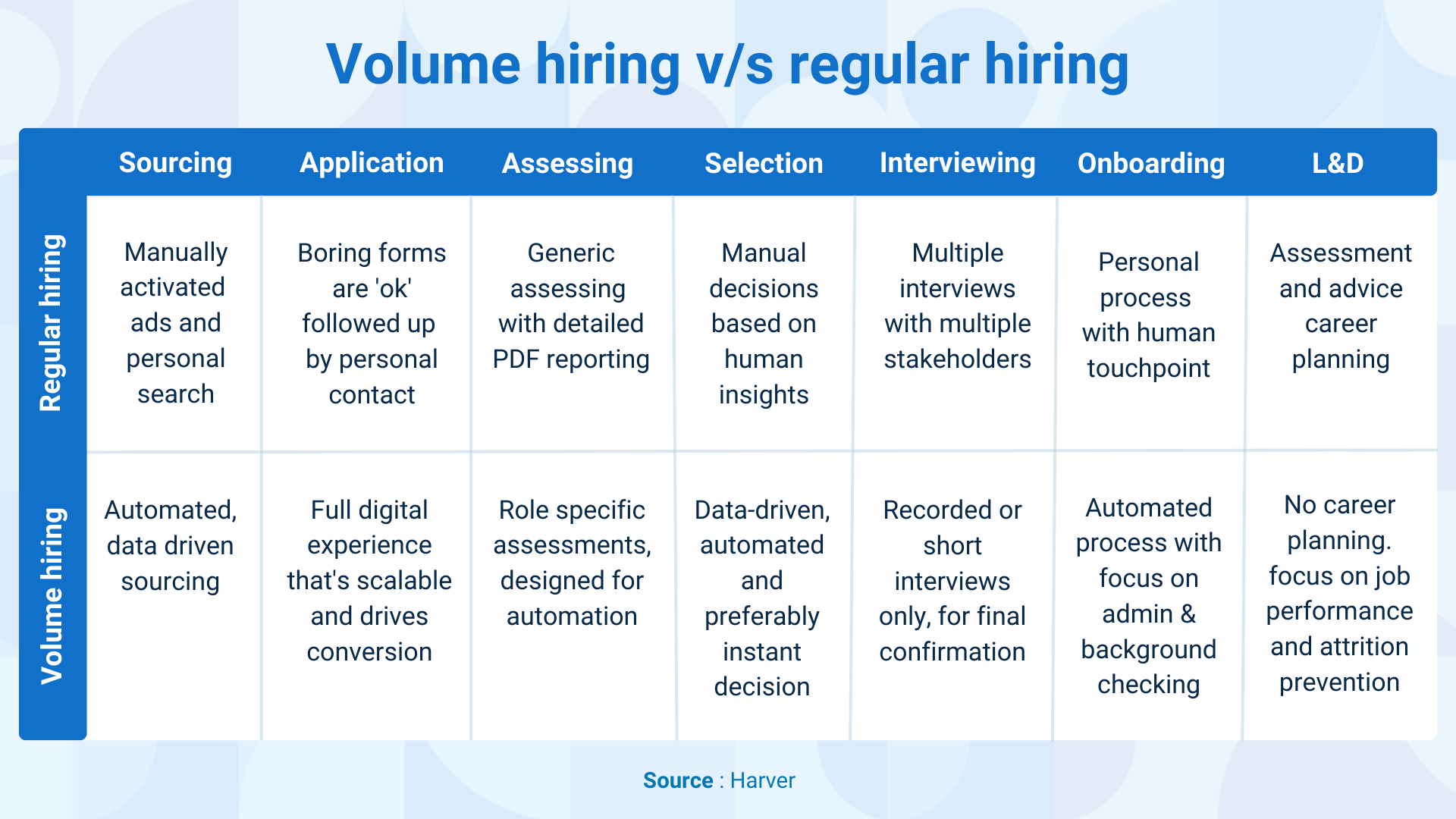
A good candidate can propel a business forward, while poor hiring decisions can lead to costly consequences.
And, not to mention, these issues are exacerbated tenfold during high-volume recruiting – thanks to some inherent limitations that accompany the process.
In this section, we are going to discuss just that- The limitations of high-volume recruiting and its impact on talent acquisition.
Let’s dive into each one by one!
1. Reduced candidate quality
When recruiters are overwhelmed with an influx of applications (common during high-volume recruiting), they may have limited time to thoroughly review each candidate’s qualifications, experience, and fit for the role.
This results in overlooking essential details and failing to identify red flags that would have been more apparent with comprehensive assessments and evaluation processes.
Such compromises cause candidates who may not be the best match for the company to slip through the cracks and be selected solely based on meeting minimum requirements, potentially leading to poor performance and high turnover rates.
2. Limited personalization
In a rush to process a high volume of profiles, recruiters often resort to generic and one-size-fits-all communication and evaluation methods, leaving candidates feeling like just another face in the crowd rather than individuals with unique skills and aspirations.
Such lack of personalization results in diminished candidate experience and isolation from the company and its culture.
3. Longer time-to-fill positions
One might assume that having numerous openings would result in faster hiring, but the reality is more complex.
Dealing with a vast pool of applicants can actually slow down the hiring process due to several factors.
Firstly, managing a high volume of applications requires significant time and effort from the recruitment team. Each application must be reviewed, and candidates must be screened and assessed to determine their suitability for the roles.
The sheer volume of candidates can lead to delays in processing applications, especially when the recruitment team is already stretched thin.
Moreover, as the number of applicants increases, so does the workload for interview scheduling.
Coordinating interviews with hundreds or even thousands of candidates can be arduous when considering the availability of interviewers and the need to align with the company’s hiring timelines.
What makes it worse is that, in some cases, the company’s applicant tracking system or recruitment software may not be equipped to handle such a large volume of applications efficiently, further delaying almost every hiring stage.
4. Higher potential for candidate ghosting
Ghosting refers to the situation where applicants suddenly and unexpectedly disengage from the recruitment process without providing any notice or explanation.
This often happens when candidates feel detached due to insufficient interaction or have applied for too many positions, making it difficult for them to track all the ongoing processes.
Moreover, in high-volume recruiting, automated systems and templates are often used for communication with candidates.
While these tools can improve efficiency, they may not always convey the personal touch that candidates seek.
As a result, talents might feel less valued and eventually drop off the hiring process.
5. Losing talents to competitors
In today’s competitive job market, skilled and highly sought-after candidates are often in demand by multiple employers simultaneously.
As a result, these candidates have more options and can receive multiple job offers within a short period.
When a company’s hiring process is prolonged and cumbersome, it can significantly impact top-tier candidates’ decision-making.
6. Difficulty in maintaining consistent employer branding
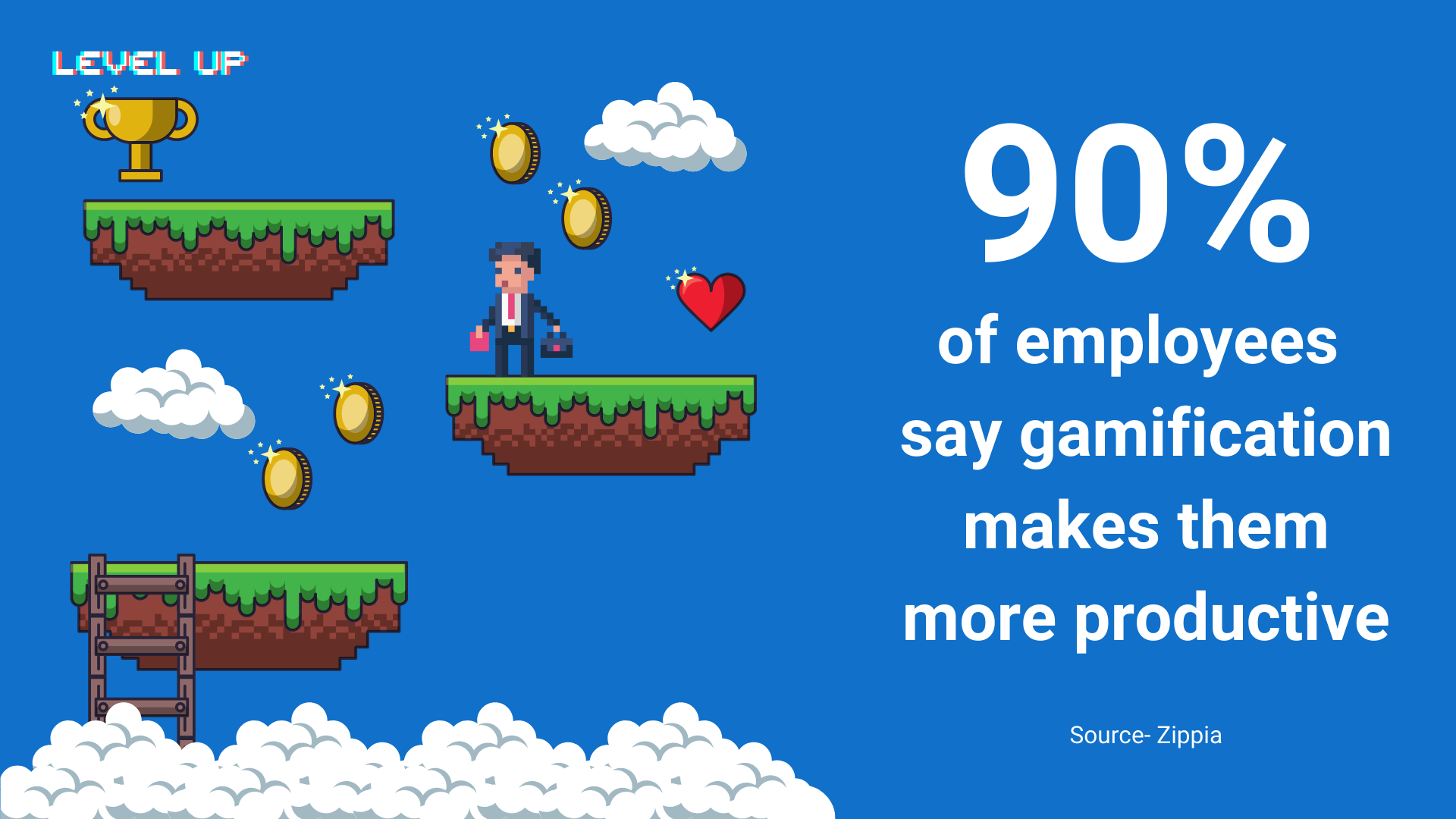
A rushed hiring process can inadvertently undermine the company’s efforts to portray a cohesive brand image to potential candidates and the public at large.
Since, in high-volume recruiting, the focus is on filling positions quickly, recruiters might prioritize speed over conveying a clear and compelling employer brand message, leading to inconsistencies in how the company presents itself in the market.
For instance, the lack of time to thoroughly assess candidates may result in inconsistent hiring decisions. If candidates with incompatible values or attitudes are hired, it can negatively impact the work culture and lead to disengaged employees.
This misalignment between the company’s actual work environment and perceived image can erode trust and discourage potential candidates from pursuing future opportunities.
Why is a gamified hiring process your best shot at mitigating the above limitations?
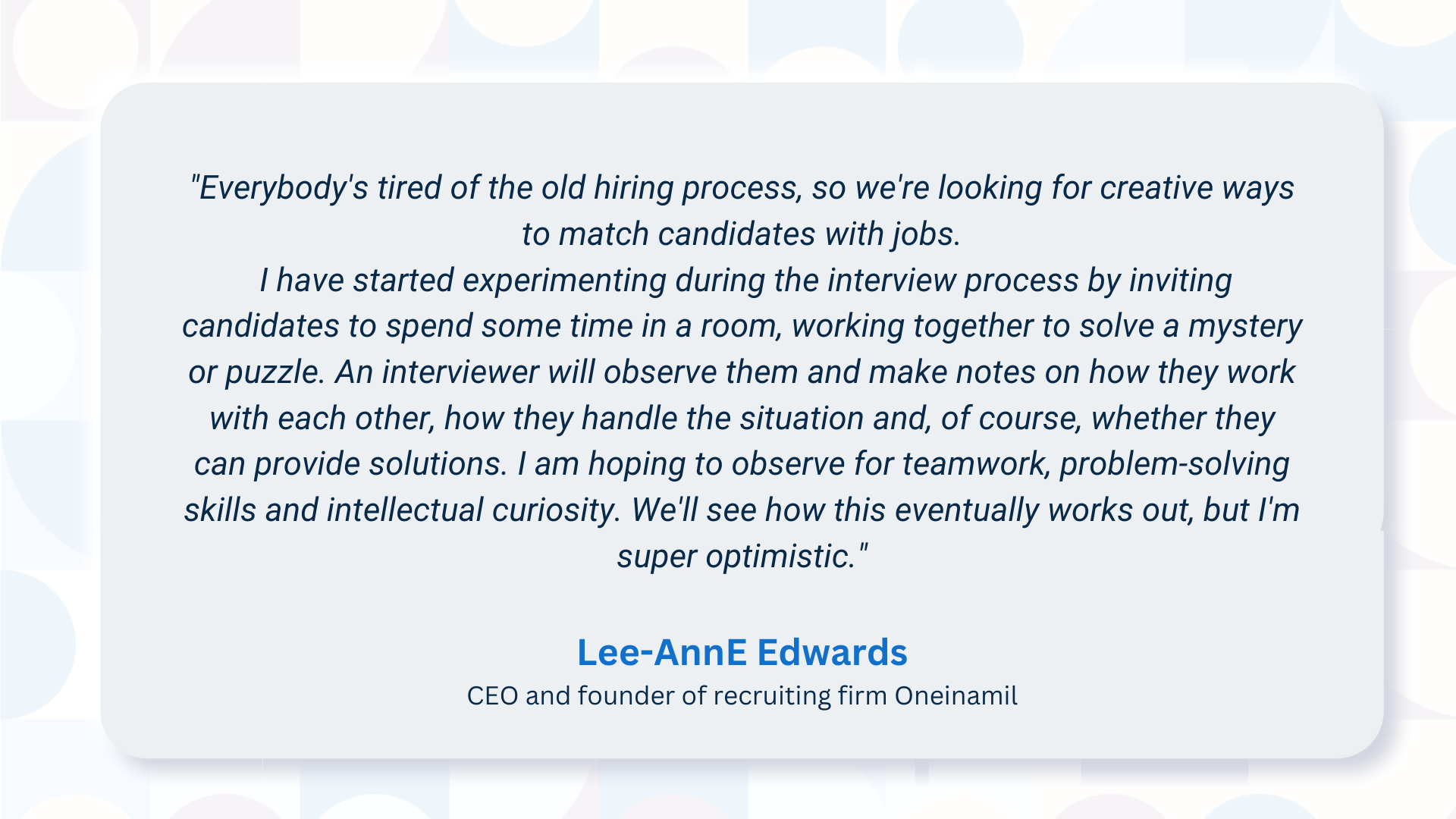
To answer this section, let’s take up a hypothetical case study!
Assume XYZ is a rapidly growing tech startup with a vision to transform how people experience entertainment and communication.
With a team of innovative engineers, recruiters, designers, etc., the company has gained significant recognition in the market.
Now, as part of their expansion plan, they need to hire multiple talented individuals quickly.
But, of course, there will be a few challenges, like:
- Overwhelming number of applications
- Insufficient candidate engagement
- Lack of focus on employer branding
- Increased administrative burden
- Higher chances of overlooking critical details
- High probability of unconscious bias, etc.
XYZ plans to adopt some gamification strategies to address these high-volume recruiting-related challenges.
And they do so by:
- Instead of relying solely on resumes, XYZ assigns interactive game-based challenges relevant to the job roles. For instance, they create a virtual coding competition for software developer positions and a problem-solving puzzle for customer support roles.
- In addition to these interactive assessments, the startup designed virtual simulations that mimicked real-world scenarios employees might encounter.
- They also incorporated storytelling elements into their gamified hiring process by presenting applicants with immersive narratives about the company’s vision, culture, and mission.
- It also replaced traditional one-way video interviews with interactive video interviews to combat insufficient candidate engagement. Candidates responded to situational questions, and their responses were used to gauge communication skills, cultural fit, and overall enthusiasm for the role.
- And finally, it implemented a leaderboard system, ranking candidates based on their performance. Regular feedback is provided to candidates, helping them understand their strengths and areas for improvement.
What do you think will XYZ gain from this adoption?
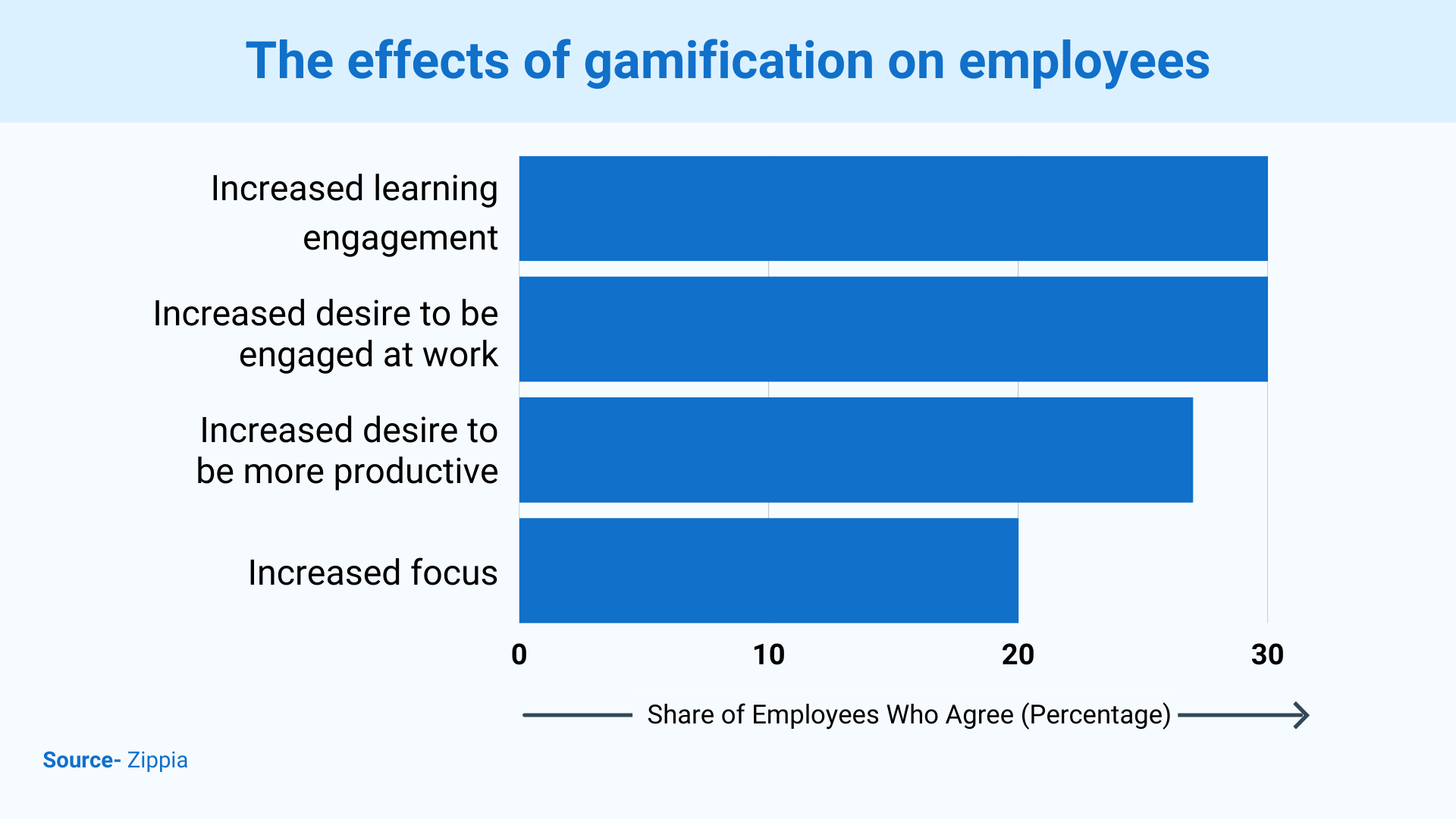
- A boost in the candidates’ quality as gamified challenges assess their skills and problem-solving abilities more comprehensively
- A connected recruiting experience that will keep both candidates and recruiters on toe throughout
- Access to a diverse talent pipeline that resonates with the company’s mission, vision, and culture.
- Strengthened employer branding and online reputation, establishing the company as the ’employer of choice.’
- Accelerated hiring process without the fear of unconscious biases slipping in
- Increased employee satisfaction and retention rate
- An automated data-driven hiring experience to attract, engage and manage candidate data efficiently
And, and, and, you know, what’s the best part?
Thousands of companies (big names in the market) have actually achieved these outcomes and even better.
For example, David Szilagyi, the Founder and CEO of benchmark.games, a company specializing in creating games to optimize hiring processes, revealed something interesting.
He shares that at benchmark.games, their mission is to assist companies in identifying the best candidates for each position automatically.
They achieve this by developing online games for behavioral pattern analysis, which can be tailored to suit their customers’ unique needs.
By engaging the company’s high performers to play these games, they use the results to create predictive models that reveal which candidates are likely to become high performers as well.
One of their prominent clients, Magyar Telekom in Hungary, a subsidiary of Deutsche Telekom, effectively utilized gamification to attract millennials and candidates with limited work experience for sales roles.
By eliminating traditional resume screening and incorporating games, Telekom assessed candidates’ competencies, including goal orientation, endurance, and problem-solving skills.
The impact was astounding – Telekom observed that some candidates, initially rejected based on their resumes, were eventually hired after excelling in the benchmark.games’ games, ultimately becoming high performers within the organization.
David also emphasized that their services offer significant advantages, including reduced hiring time and the effectiveness of selecting high-performing candidates.
According to him, candidates hired through a gamified process achieved an impressive 95% of the KPI levels of high performers within just three months of being hired by Telekom.
Apart from this, companies like Unilever, Google, Siemens, Diollete, Marriott Hotel, etc., have time and again shared how gamification has changed the way they interact and nurture their talents.
Isn’t it amazing?
Do you now believe gamification in recruitment is a boon? Especially for high-volume recruiting?
8 best practices to adopt gamification in the recruitment process
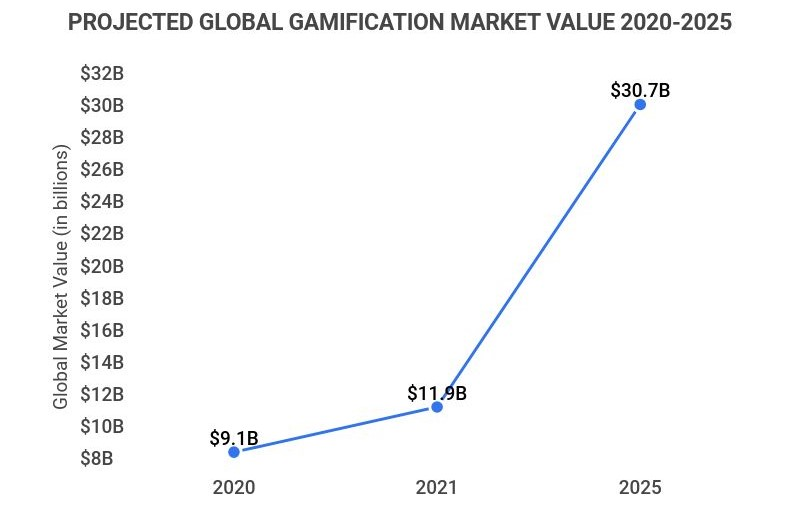
The case studies we discussed above clearly show that Gamification works!
But to enjoy the benefits it brings with itself, you must know how to adopt and implement the gamification techniques in your high-volume recruiting process the right way.
That’s what this section is all about – 8 ways to adopt a gamified hiring process!
1. Identify key stages you wish to gamify in your recruitment process
Before diving headfirst into gamification, it’s crucial to identify the stages in the recruitment process where gamified elements can be integrated seamlessly.
Whether it’s the initial application, skills assessment, or interview stage, incorporating gamification in the right places can enhance the candidate experience and streamline the selection process.
For example, you can use the following gamification techniques at these stages:
a. Candidate sourcing:
- Virtual job fairs: Host online job fairs with virtual booths and interactive activities where candidates can explore your company, engage with your team, and complete challenges to showcase their skills.
- Referral programs: Implement gamified referral programs where current employees can refer candidates and earn points or rewards for successful hires.
- Social media challenges: Launch social media campaigns that encourage candidates to participate in challenges related to your company’s industry or values, thus increasing brand awareness and attracting potential candidates.
b. Pre-screening assessments:
- Gamified quizzes: Create short, interactive quizzes to assess candidates’ basic knowledge and skills, with immediate feedback and points awarded for correct answers.
- Simulation games: Develop virtual simulations that replicate job-related tasks, allowing candidates to experience the role and demonstrate their capabilities.
- Scenario-based challenges: Present candidates with real-life work scenarios and ask them to provide video responses or written solutions, turning the assessment into an interactive experience.
c. Interviews:
- Role-play scenarios: Organize virtual role-playing exercises where candidates interact with chatbots or virtual avatars to simulate everyday workplace situations relevant to the job.
- Escape room interviews: Conduct virtual escape room-style interviews that challenge candidates to work collaboratively to solve problems and showcase their problem-solving skills.
- Gamified video interviews: Use video interviewing platforms with built-in gamified elements such as timed responses and points for effective communication.
d. Onboarding:
- Interactive onboarding portal: Create a gamified onboarding platform with progress bars, quizzes, and rewards for completing different onboarding modules.
- Orientation games: Organize team-building games or scavenger hunts during on-site orientation for new hires, encouraging interaction and familiarity with the workplace.
- Digital badges and achievements: Award digital badges and achievements to new hires as they complete onboarding milestones, adding an element of fun and accomplishment.
e. Behavioral Assessments:
- Team-based challenges: Organize virtual team challenges that assess candidates’ collaboration, communication, and problem-solving skills in group settings.
- Leadership simulations: Design simulations that evaluate how candidates handle leadership responsibilities and make decisions in simulated scenarios.
- Decision-making games: Utilize decision-making games where candidates must navigate complex situations and demonstrate their judgment and critical thinking.
f. Candidate engagement and communication:
- Interactive chatbots: Implement interactive chatbots that engage candidates, answer their questions, and provide updates throughout recruitment.
- Progress tracker: Offer candidates a personalized progress tracker, showing their advancement through the different stages of the hiring process, providing a sense of accomplishment.
- Gamified application portal: Design an application portal with gamified elements, such as a progress bar or “leveling up,” as candidates complete different application components.
Do you think these are difficult? No, each of these techniques can be automated. So, you just need to structure your workflow once, and you are good to go, no matter how many applications you receive.
Remember, you can’t and shouldn’t gamify every stage. Focusing only on priority ones is crucial for making the most impact and achieving your hiring objectives.
2. Define clear objectives and make sure your team knows too
Clearly outline the objectives you want to achieve through gamification. It could be enhancing candidate engagement, improving the quality of hires, reducing time-to-hire, or increasing the retention of top talent.
Communicate these goals effectively to your recruitment team to ensure everyone is on the same page and working towards the same outcomes.
3. Create engaging gamified assessments
The heart of gamification lies in its ability to create interactive and captivating assessments.
Whether it’s coding challenges, situational judgment scenarios, or virtual reality simulations, these gamified assessments will not only evaluate a candidate’s skills but also leave a lasting impression on your company’s commitment to innovation.
Point to note: Ensure the assessments align with your job role, company culture, and brand’s culture, values, and mission.
4. Foster healthy competition
Humans are naturally competitive beings, and gamification taps into this aspect of our psychology.
By introducing elements of competition in your gamified hiring process, you can motivate your candidates and bring out their best performance.
Mind that leaderboards, badges, or progress tracking can encourage applicants to put in extra effort and showcase their skills. However, ensure the competition remains fair and transparent, promoting a positive candidate experience.
5. Balance fun with professionalism
While gamification adds an element of fun to the recruitment process, you must maintain a balance between entertainment and professionalism.
Ensure that the gamified elements do not overshadow the seriousness of the recruitment process or dilute the candidate’s focus on showcasing their skills and qualifications.
6. Leverage data and analytics to keep track of your high volume profiles
Implement a robust data tracking system to monitor the effectiveness of your gamified hiring process.
Analyze metrics such as candidate completion rates, time spent on assessments, drop-off points, and overall performance.
This data-driven approach will help you optimize your high volume recruiting process and make data-backed decisions.
7. Invest in the right vendor
If you lack in-house resources or expertise in gamified recruitment, consider partnering with a reputable vendor or platform specialized in gamification.
Ensure they have a track record of successful implementations and can tailor their solutions to your company’s unique requirements.
8. Seek candidate feedback
Gather feedback from all the participants and strive to understand their perceptions, and opinions about the overall process.
This feedback will offer valuable insights into the effectiveness of the process and allow you to make improvements based on real user experiences.
That’s it! High-volume recruiting is no doubt daunting, but now that you know how gamification can make it breeze, we hope you are ready for your next-hiring cycle.
Did you find this article insightful? Let us know your thoughts!
Frequently asked questions
Q1- What is high-volume recruiting, and why is it challenging for businesses?
High-volume recruiting refers to the process of hiring a large number of candidates within a relatively short time frame. It can be challenging for businesses due to the sheer volume of applications to review, limited resources, and the need to maintain hiring standards.
Q2- How can gamification benefit high-volume recruiting efforts?
Gamification can benefit high-volume recruiting by making the hiring process more engaging and interactive for candidates. It allows companies to assess candidate skills and attributes in a fun and challenging way, enhancing candidate experience and attracting top talent.
Q3- What are some effective gamification techniques used in high-volume recruiting?
Some effective gamification techniques include interactive assessments, virtual challenges, and simulated work scenarios. These techniques help assess candidates’ skills and cultural fit while keeping them engaged throughout the hiring process.
Q4- Does gamification really improve the quality of hires in high-volume recruiting?
Yes, gamification has been shown to improve the quality of hires in high-volume recruiting. Companies can identify the best-fit candidates and make data-driven hiring decisions by engaging candidates and assessing their skills more interactively.
Q5- Are there any industries or roles where gamification is particularly effective in high-volume recruiting?
Gamification can be effective across various industries and roles, especially for positions that require specific skills or behavioral traits. It is particularly useful for sales, customer service, and technology roles, where interactive assessments can showcase a candidate’s capabilities.
Q6- Can gamification be integrated into the entire high-volume recruiting process, including candidate screening and interviews?
Yes, gamification can be integrated into the entire high-volume recruiting process. From initial candidate screening assessments to interactive interviews, gamification provides valuable insights into candidates’ suitability for the role and company culture.
Q7- Is gamification suitable for all sizes of businesses, including startups and large enterprises?
Yes, gamification is suitable for businesses of all sizes. Startups and small businesses can benefit from gamification by attracting top talent and making recruitment more efficient. Large enterprises can use gamification to streamline high-volume hiring and ensure a positive candidate experience.
Q8- How can companies ensure a fair and unbiased gamified hiring process in high-volume recruiting?
Companies should design gamified assessments focusing on job-related skills and competencies to ensure fairness and avoid biases. Regularly reviewing and updating gamified assessments based on data and candidate feedback can also help maintain an objective hiring process.
Q9- What key metrics should companies track to evaluate gamification’s success in high-volume recruiting?
Companies can track metrics like candidate engagement, time-to-hire, candidate drop-off rates, and the quality of hires. These metrics can help assess the effectiveness of gamification in the high-volume recruiting process.
Q10- Are there any cost-effective tools or platforms available for implementing gamification in high-volume recruiting?
Yes, various cost-effective gamification platforms and tools are available, ranging from online assessment platforms to interactive recruitment software. You can explore options that align with your budget and hiring needs.




